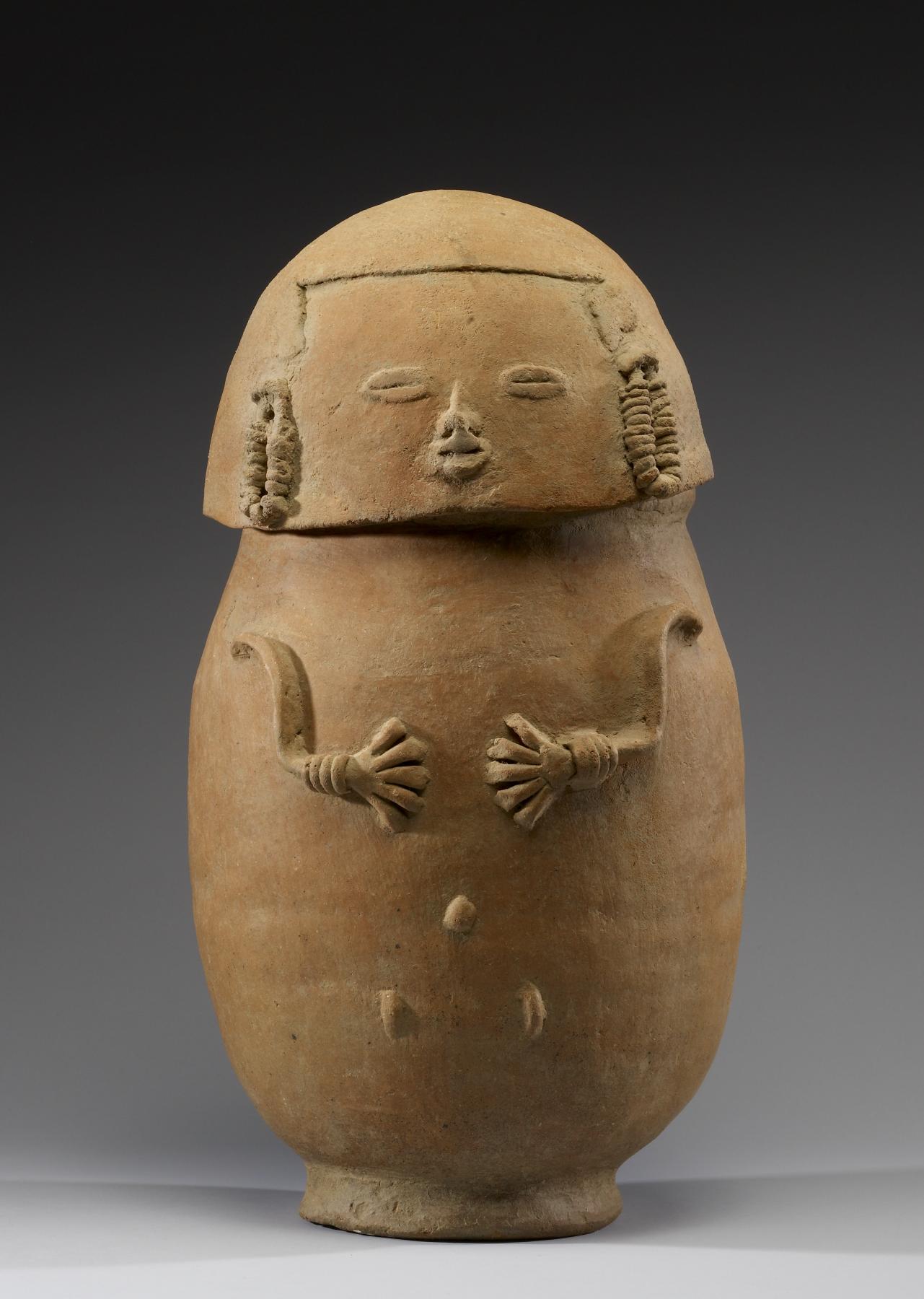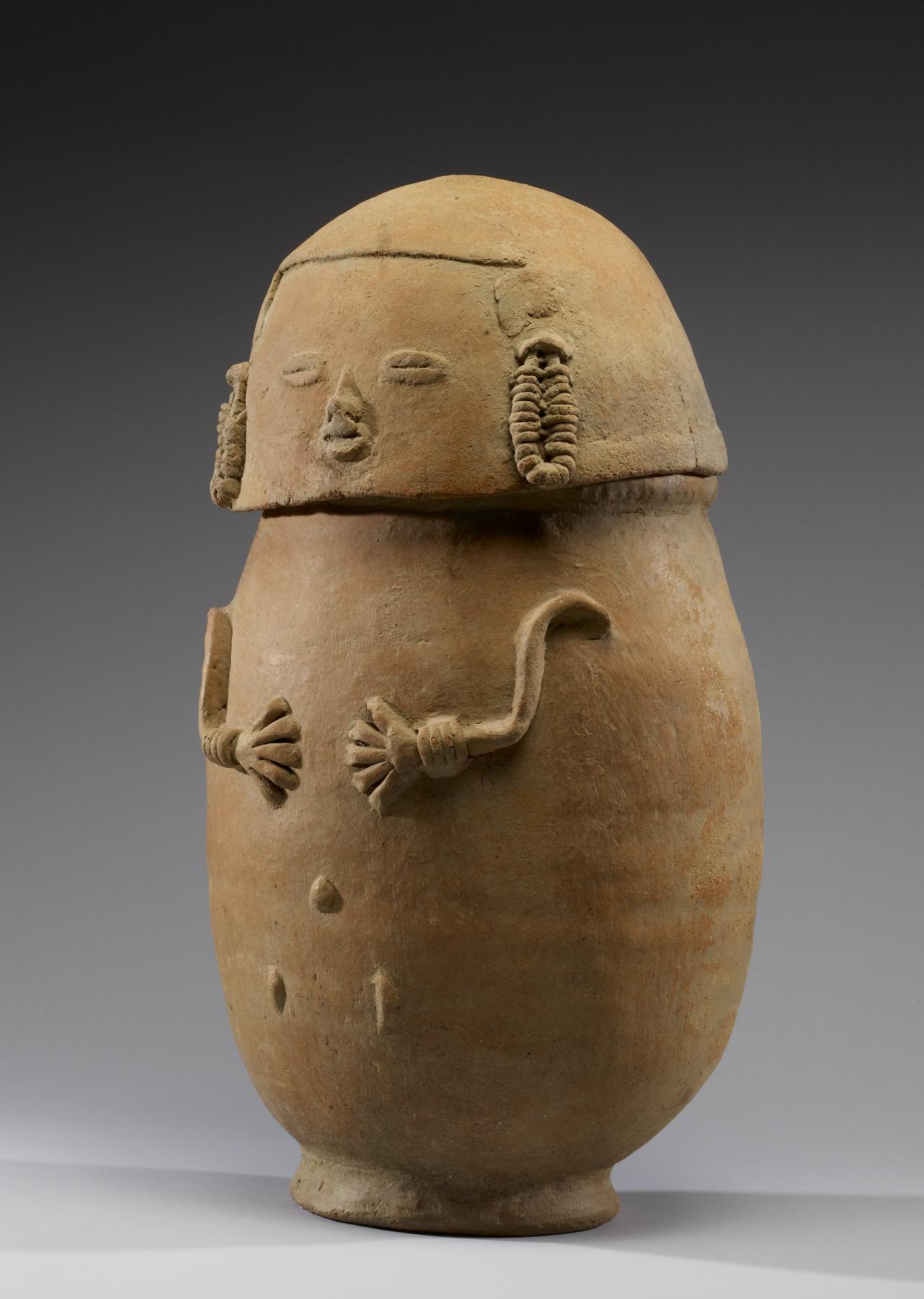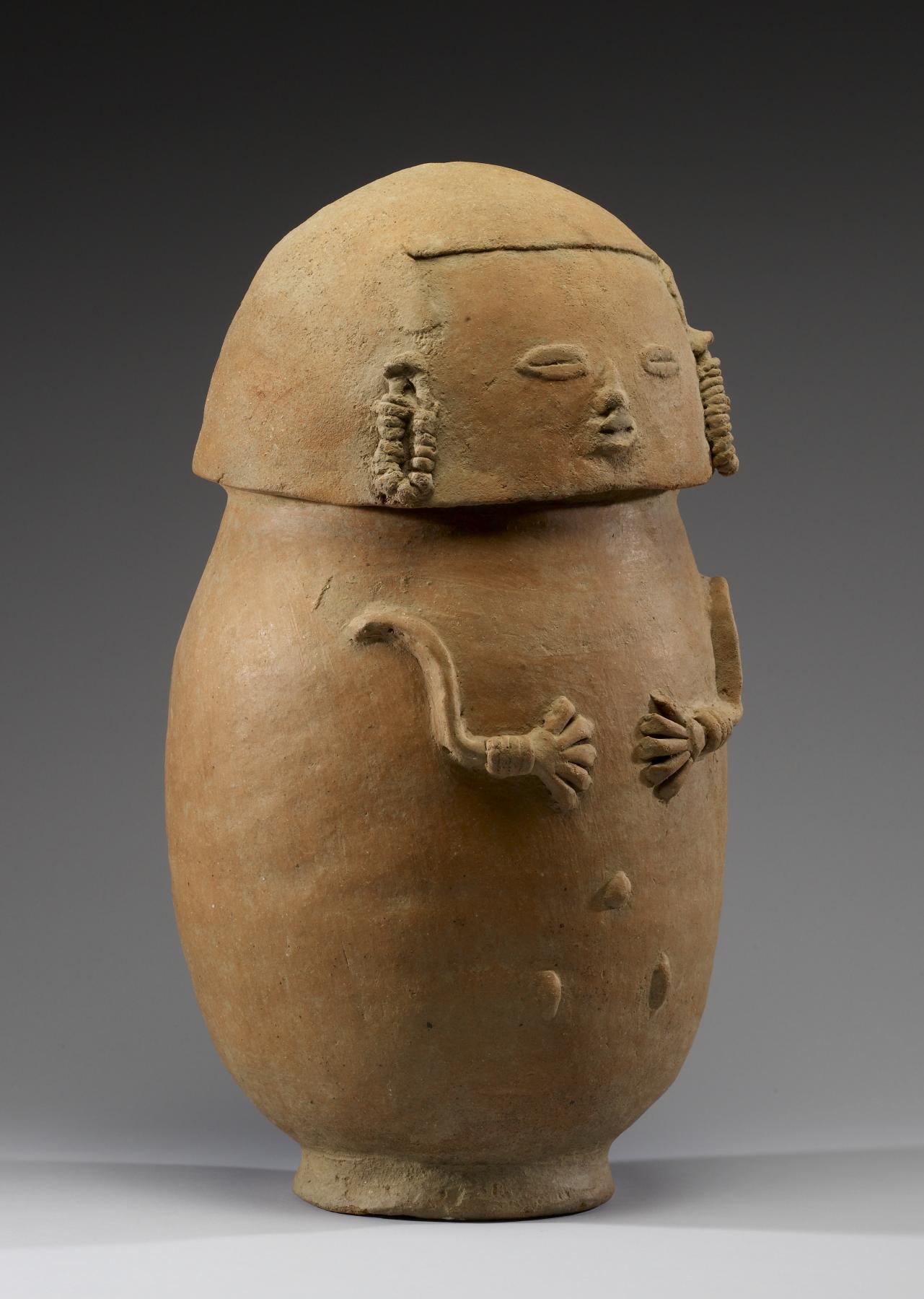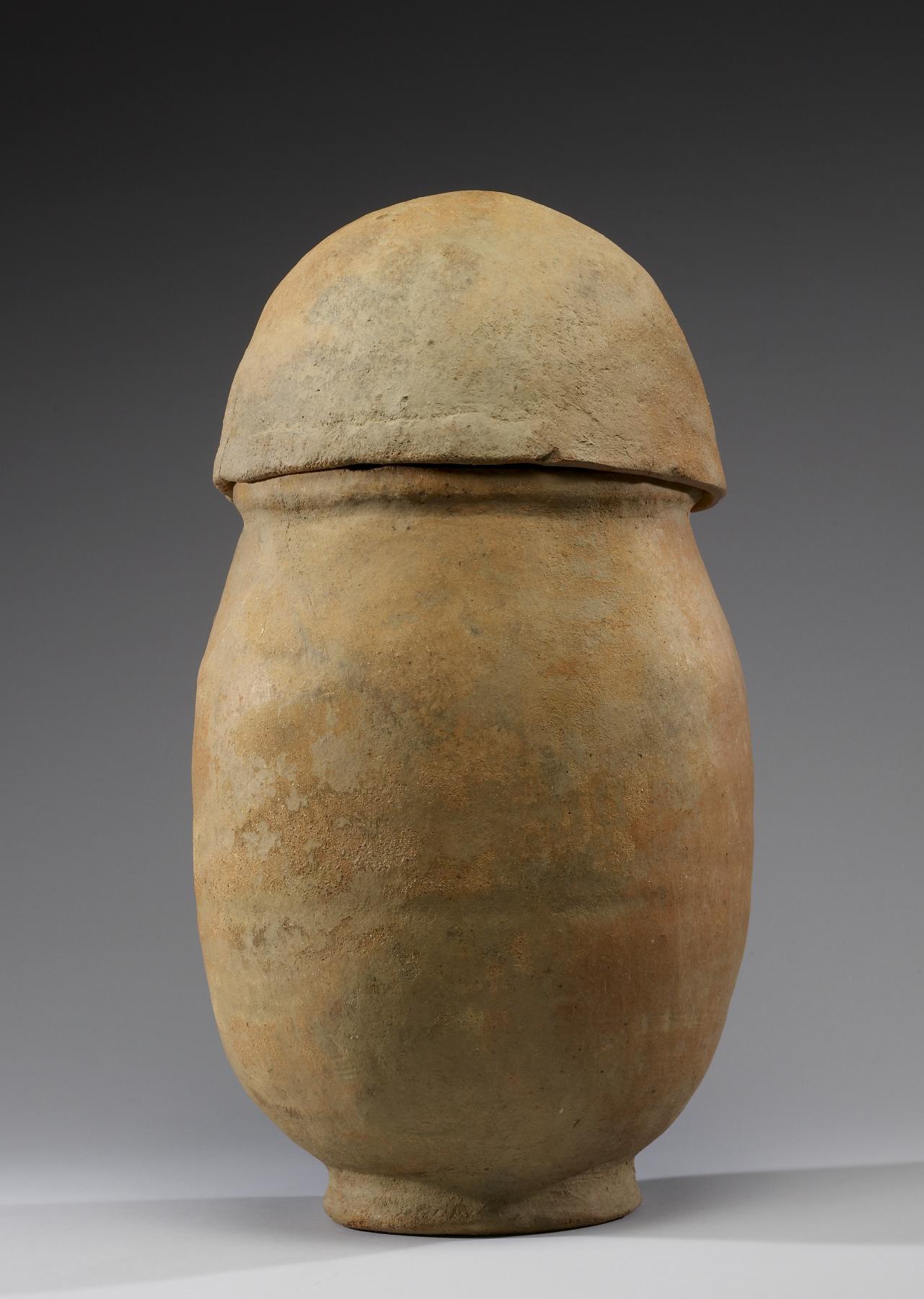Burial Urn
(Ancient Americas )
Figural urns found in chambers inside deep shaft tombs are particularly abundant in northwestern Colombia. The urns contained human bones, redeposited in these special containers after the flesh was removed either through cremation or burial in the ground for a short period of time. The shaft tomb burials were believed to be vital links to the honored dead, and the bones were perceived as seeds from which new life sprang. The practice of redepositing the defleshed skeletal remains inside urns and placing them in shaft tombs reenacted this ideology. By "planting" bones (seeds) in phallic-shaped urns inside womblike chambers in the ground (mother earth), renewed life would spring from the burials. A related belief concerning the nature of the tomb has been recorded among the present-day Desana people of northern Colombia. They define the grave as a uterus to which the physical part of all humans returns at death.
Provenance
Provenance (from the French provenir, 'to come from/forth') is the chronology of the ownership, custody, or location of a historical object.
Private collection, California. Ron Messick Fine Arts, Santa Fe, New Mexico; purchased by John G. Bourne, Sante Fe, 2002; given to John G. Bourne Foundation, 2002 [1]; given to Walters Art Museum, 2013.
[1] according to Bourne Foundation accounts
Exhibitions
| 2012-2013 | Exploring Art of the Ancient Americas: The John Bourne Collection Gift. The Walters Art Museum, Baltimore; Frist Center for the Visual Arts, Nashville. |
Conservation
| Date | Description | Narrative |
|---|---|---|
| 1/13/2012 | Treatment | stabilized |
Geographies
Colombia, Magdalena-César (Place of Origin)
Measurements
H: 19 1/2 x W: 10 9/16 x D: 10 13/16 in. (49.6 x 26.9 x 27.4 cm)
Credit Line
Gift of John G. Bourne Foundation, 2013
Location in Museum
Not on view
Accession Number
In libraries, galleries, museums, and archives, an accession number is a unique identifier assigned to each object in the collection.
In libraries, galleries, museums, and archives, an accession number is a unique identifier assigned to each object in the collection.
2009.20.214








